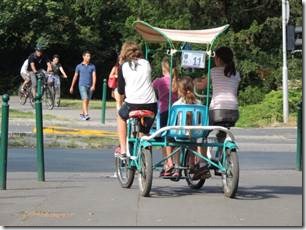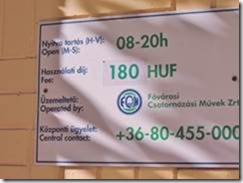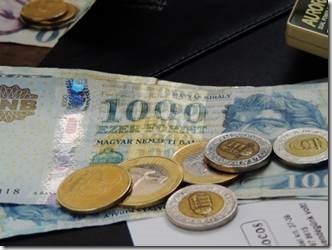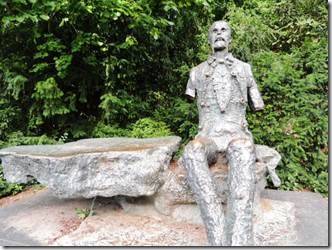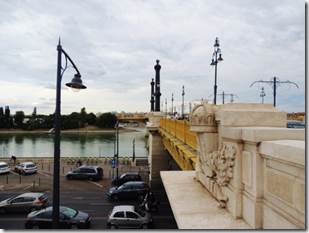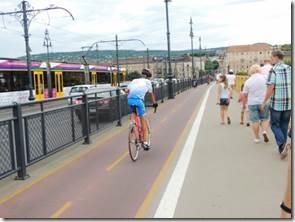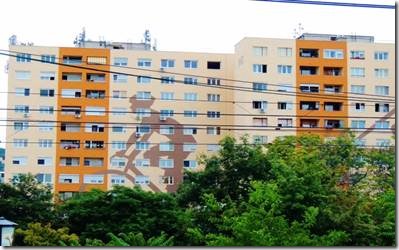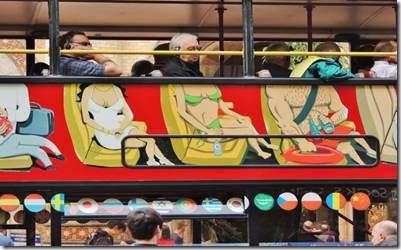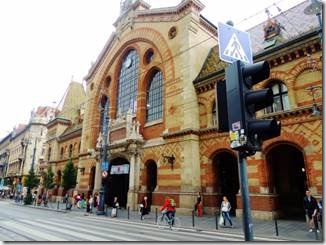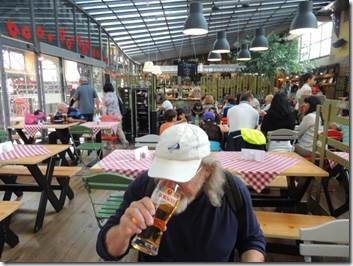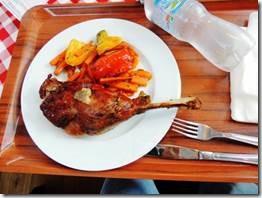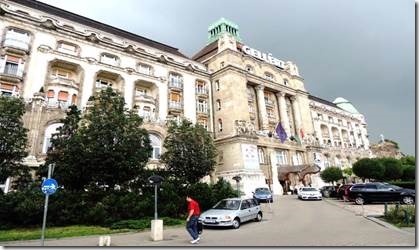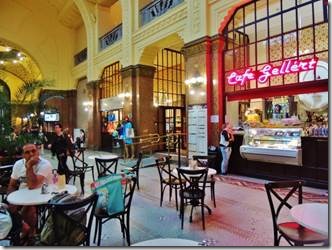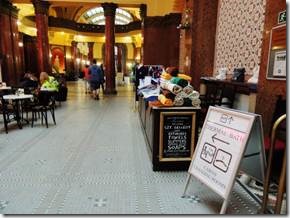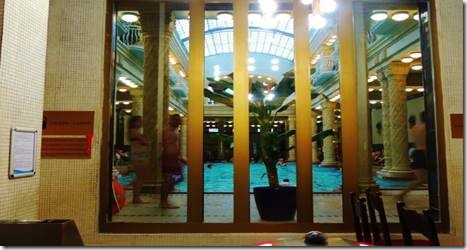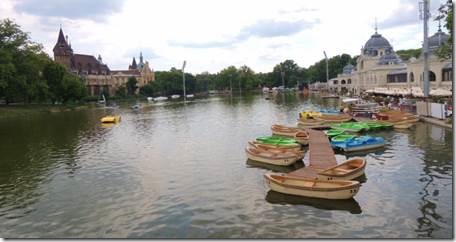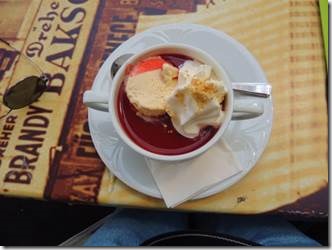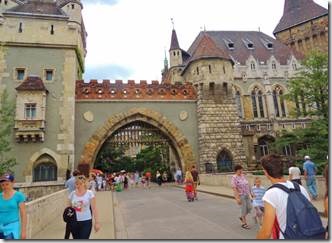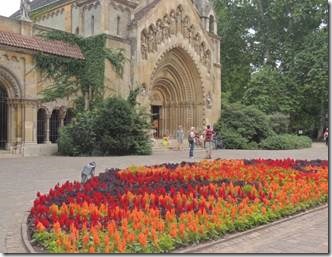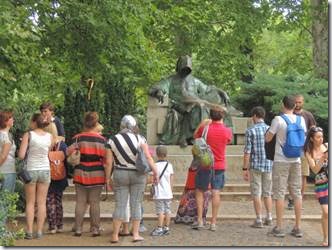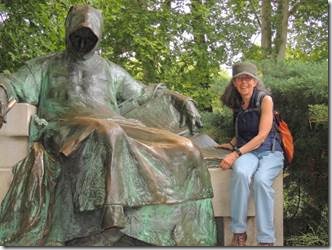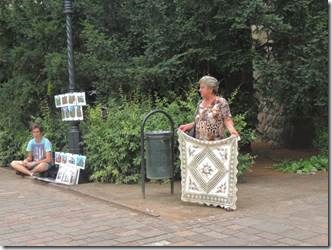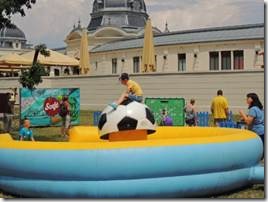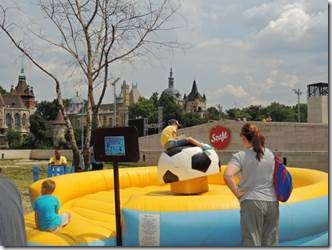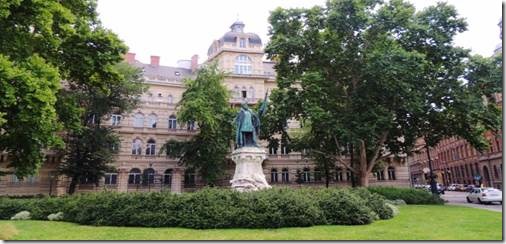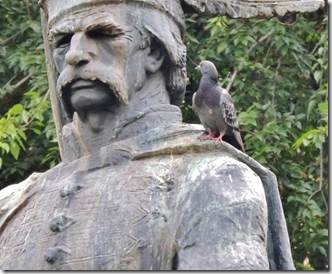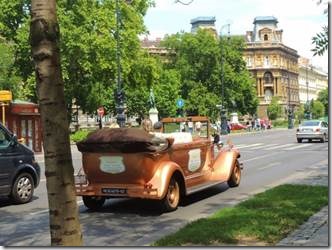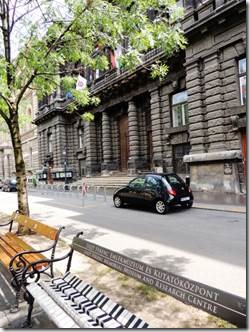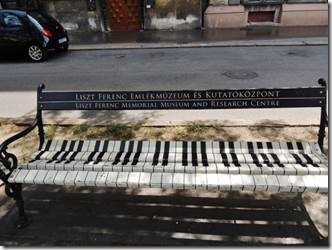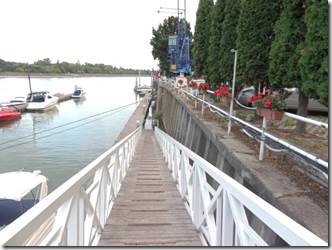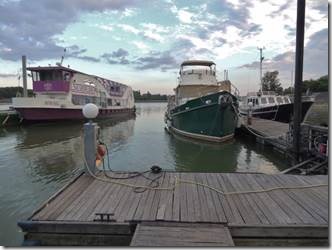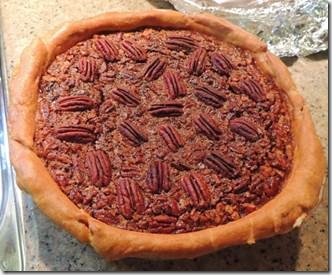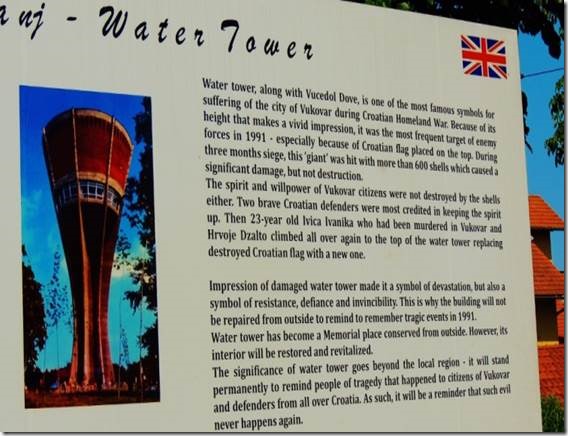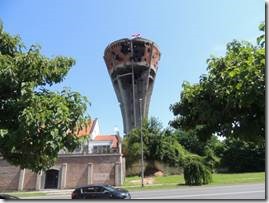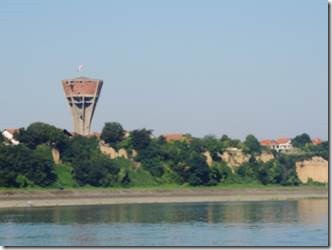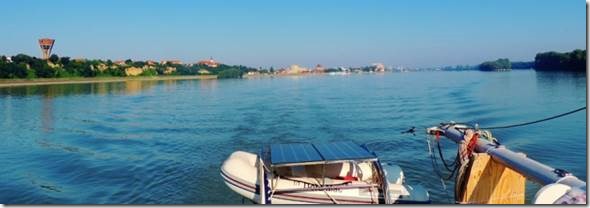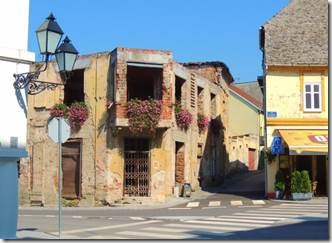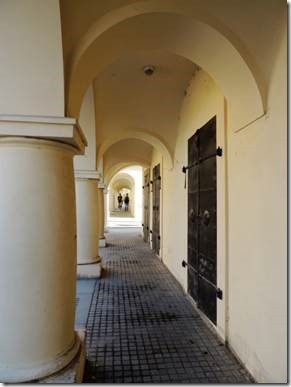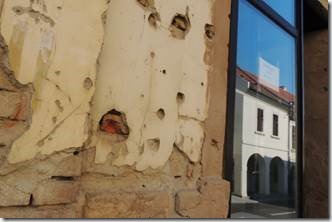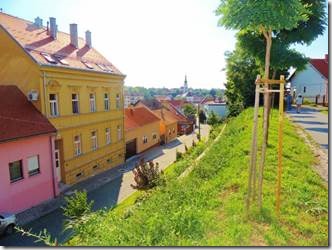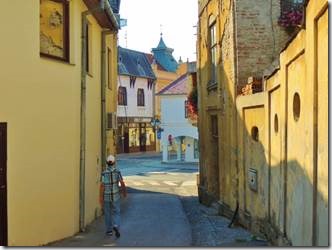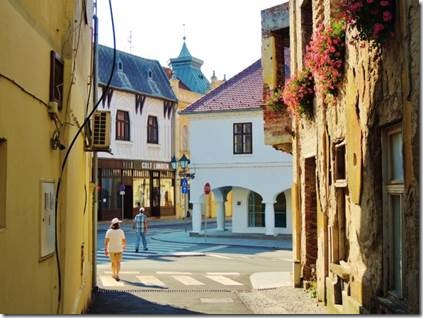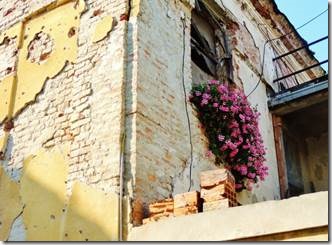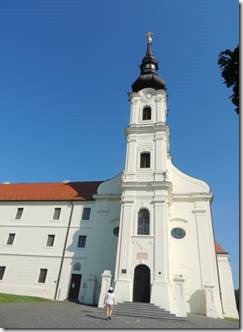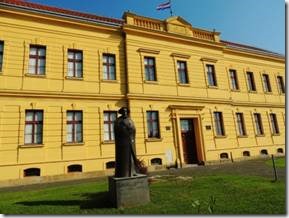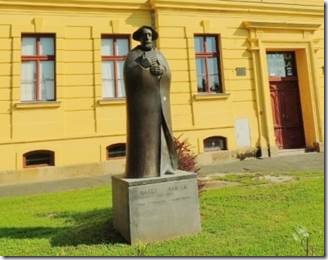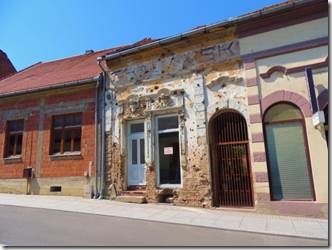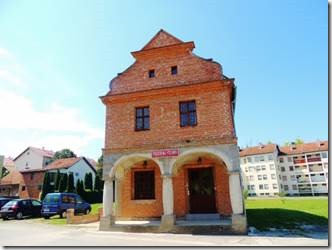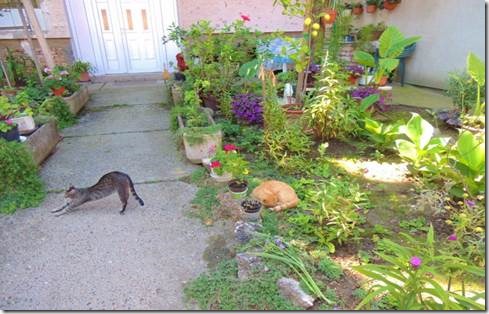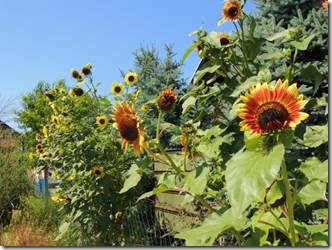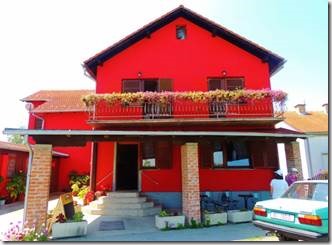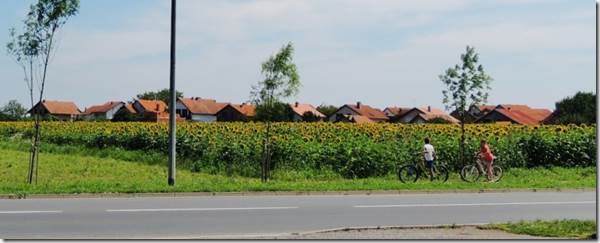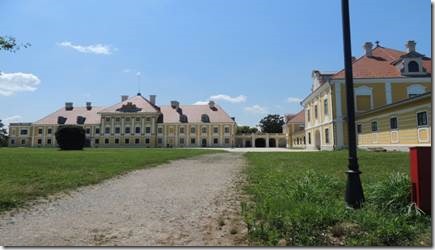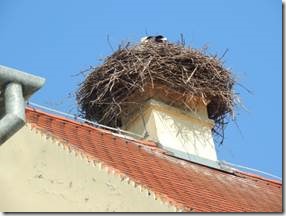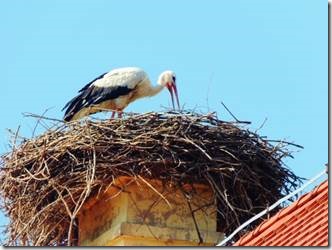Porecka Reka
Anchoring for the night.
This is the final Budapest email. Now I can begin to research Belgrade for the emails I’ll send. In between I’ve have two emails about Novi Sad, Serbia, our stop just before Belgrade.
Ru
|
Margaret Island Budapest’s Margaret Island was originally known as Rabbits Island. (Lots of rabbits and hunting of rabbits) In the Middle Ages, it was home to a number of religious cloisters, the remains of which can still be seen today. At the time it was only accessible by boat. By the beginning of the 1800s, when it was known as Palatinus, this 2.5 kilometer-long (1.4 mile) island was embraced by members of the royal family, who built a summer residence here and took it upon themselves to turn it into an ornate garden. The island opened to the public in 1869 and soon became a health resort attracting visitors taking advantage of its therapeutic springs. Today, the five-hundred-meter-wide (550 yard) island covers about 92 hectares (227 acres) and is linked to the mainland by two bridges: the Margaret Bridge to the south and the Árpád Bridge in the north. The island is popular for its recreational attractions but there are also several historical sights on Margitsziget. http://www.aviewoncities.com/budapest/margaretisland.htm Peddle vehicles can be rented by all ages. These young girls had driven themselves into a rut and Randal had to drag it out for them so they could get going again. Looks like great fun to me! No, we didn’t rent one…. |
|
No free public toilets and restaurants charge unless you’re a customer. 180 HUF (Hungarian Forint) = $.7853 which I thought was way too much until I did the math. But 300 HUF to use the stinky WC in the restaurant near the St Mathias Church was way too much. 300 HUF = $1.30 Too many zeroes in the paper money .0043 cents = 1 Hungarian Forint so that 1,000 HUF bill = $4.30 Randal carried a calculator which made things lots easier when figuring the bill. Currency different by ½ or 1/3rd or ¼ is lots easier for me than this was for some reason. |
|
Margaret Island statue Who is this man? I found nothing even in Hungarian to give me a clue. I asked a young man on a bike who asked his friend who asked someone else and the answer from the third man was “maybe an author.” Maybe one of my super sleuth library pals can tell me; the armless statue on Margaret Island. The island does have a Promenade of Hungarian Artists. “Around the chapel runs the Promenade of Hungarian Artists (Művészsétány) with busts of the country’s prominent poets, writers and other artists. The tranquil surroundings with groves, stately trees, flowers are ideal for leisurely walks. János Arany (1817-1882) the great Hungarian poet wrote his most beautiful poems under the mighty trees on Margaret Islands.” |
|
Trains, buses/cars/ bikes/pedestrians each had their own space over the Margit Hid (Bridge) Margaret Bridge is in two sections, the first connecting the Buda Ring with the southern tip of Margaret Island, and the second providing a link with the Outer Ring. Constructed in 1876, it’s the second oldest bridge over the Danube, and although destroyed during the WWII it was rebuilt in 1948. |
|
Soviet style apartments. We saw some similarly painted buildings in Komarno though I don’t think they had images on them. |
|
Did these passengers choose their seats by the images painted on the side of the tour bus? |
|
http://budapestmarkethall.com/ Built at the end of the 19th century, the Central Market Hall (officially called ‘Központi Vásárcsarnok’ in Hungarian) is the largest indoor market in Budapest. Among other things, on the ground floor you’ll find a large selection of sausages, meats, cheeses, fruits and vegetables. On the second floor, there are food stands and plenty of vendors selling handicrafts, clothing, embroidery, chessboards and other souvenirs. Paprika and Tokaji are also sold here. In the basement, there is a fish market, a small Asian grocery store, a supermarket, and a small drugstore. While focusing on Hungarian products, on International Gastro Days (held on Fridays and Saturdays), the Central Market Hall also features the food and cuisine of a foreign country. The building also has some architectural significance. The metal roof structure is still the original, and the roof is covered with decorative Zsolnay tiles. There are four other markets like this in Budapest, which were all built in the same style (these are in Klauzál tér, Rákóczi tér, Hold utca and Hunyadi tér). An interesting fact is that all five buildings opened on the same day, on February 15th 1897. Because of its location and size the market hall on Fővám tér was chosen to be the ‘central’ market hall by the city as opposed to the other markets ranked as ‘district’ markets. When it opened ships sailed right into the building using special docks. The old customs house across from the building is now part of the Corvinus University. Today, the Central Market Hall remains a wonderful food market and a must-see, even if you don’t buy anything. It’s often visited by celebrities and foreign dignitaries. |
|
Fakanal Restaurant http://www.fakanaletterem.hu/en/ was upstairs in the Market Hall and easier to negotiate than the food vendors in the upstairs walkways. Some offerings on the menu: Rich goulash soup – small/big 890 HUF/1250 HUF Fish soup – on every Thursday – small/big 890 HUF/1250 HUF Main dish Veal stew 2400 HUF Stuffed cabbage – accord to the season 1700 HUF Stuffed paprika – accord to the season 1700 HUF Roasted leg of goose 2400 HUF is what I had and it was wonderful for about $10 Knuckle of pork 2900 HUF Giant Vienna scallop 2900 HUF Dessert Home-made strudel 530 HUF There are lots of ways to eat more cheaply but we were in the Market Hall and hungry so gave this place a try. |
|
St. Gillert Spa and Swimming Pool www.gellertfurdo.hu We ducked into the building to get out of the approaching downpour. “Built in the secessionist style, the St. Gellert Spa and Hotel opened to the public in 1918. In later years a surf-bath and a bubble bath were added. Put into service in 1927, the original surf machine, which generates the artificial waves, is still in operation. …. Almost the entire range of medical services are available in the spa which has a day-patient hospital and inhalatorium. Lava stone massage, spa pedicure, chocolate treatment and a so called Cleopatra spa and an herbal spa are also available.” Social security-supported medical treatments for eligible persons: Bathing in medicinal water pools and tubs, mud-packs, sub-aquean traction, bathing in carbonated water, medical massage treatments, underwater jet massage and complex balneological care. Medically recommended for: Degenerative diseases of the joints; certain diseases of the spine;chronic and semi-chronic inflammation of the joints; intervertebral disc diseases; intercoastal neuralgia; aortic stenosis; circulatory diseases; and in the inhalatorium treatment of asthmatic disorders and chronic bronchitis. (Once upon a time Randal and I thought bike riding cured all of these things.) Most of the baths open today were established by the Turks, examples of which, the Rudas and the Kiraly Baths, are still in operation after 500 years. At that period in history, our city was called the Mecca of Rheumatics due to the salutary effects of its thermal waters. …. Unmatched even on a world scale, the daily delivery of 70 million litres of 21-78 C thermal waters gushing out of the 123 natural hot springs and drilled wells means that Budapest can proudly proclaim itself as the capital city of healing and thermal waters.” Budapest : The City of Spas booklet |
|
A peek into one of the pools. Orsi, our walking tour guide, told us that this particular spa was probably the most expensive, but not necessarily the best… It just depended on what one was looking for in the experience. |
|
Located on the Pest side, it was a tram, train and then long walk to get to the City Park. “In winter the lake transforms in to the largest artificial ice rink in Europe, opened in 1870. In summer, there are boats for hire.” Budapest City Walks map On the right side of the lake were restaurants and the left side “The biggest museum of agriculture in Europe can be found in the Castle of Vajdahunyad on the Széchenyi-island in Városliget, Budapest in outstanding building. Its designer Ignác Alpár merged different architectural styles, made use of different elements, details of well-known buildings of historical Hungary. Citizens of Budapest named this group of buildings "Vajdahunyad castle" on the basis of the part of palace to be seen from the lake. The building was erected originally for the Millennial Exhibition, and it has been used to host the museum of agriculture starting in 1897. Entering the main entrance we proceed through the marble arched court up to the first floor via marble staircase. You can cast a glance over the inside of the building while visiting the exhibitions. Beautifully painted walls, enormous crystal chandelliers, carved pillars, stained windows can also be seen.” Fruit soup 🙂 It tasted like unsweetened strawberries had been frozen and then blended into sherbet consistency. A scoop of vanilla ice cream and a few squirts of whipped cream were floating on top. It was great! |
|
“Vajdahunyad Castle was built between I896 and 1908; its various parts illustrate the different styles of Hungarian architecture. It was designed by Ignác Alpár, and derived its name from the wing facing the lake, which is an imitation of the Castle of Vajdahunyad in Transylvania, the family castle of János Hunyadi, the hero of the Turkish wars, which was built in its present form in the fifteenth century (today Hunedoara, Rumania). A Gothic gate leads to the courtyard. On the opposite side, the outstanding structure among the Gothic group of buildings is the copy of the castle-tower of Segesvár in Transylvania (now Sighisoarã, Rumania). Inside there is a Gothic court- yard with some early Renaissance elements. To the left are Romanesque buildings; the chapel uses motifs of the famous thirteenth-century Benedictine abbey at Ják in Western Hungary, the most beautiful surviving relic of Romanesque architecture in the country. The chapel is flanked by a pseudo-medieval ambulatory with a corner turret. The buildings facing the lake are imitations of a castle-wall and a feudal castle. The first “Anonymous.” Rubbing the pen in his right hand is supposed to bring luck, but I opted to hold the book instead. It took forever to get a turn to do that and some else was on the pen side while Randal took this photo. “The largest façade facing the courtyard was built in Baroque style. Opposite is the statue of Anonymus, his face hidden in his monk’s hood symbolising the fact that the identity of the thirteenth-century chronicler is unknown-even today we do not know much more about him than that he worked at the royal court. His work "Gesta Hungarorum", written in Latin and based on earlier chronicles now lost, contains the Hunnish-Hungarian cycle of legends as well as the history of the Magyar Conquest and of the first kings of the House of Árpád. (The statue is the work of Miklós Ligeti,1903.) |
|
There were a few women standing in certain spots holding this lacework. Not an easy job at all. We’ve pretty much stopped collecting anything to bring home. |
|
Too bad this was just for kids! The small boy in the blue shirt had just gone flying off too quickly for me to take a photo of him upside down. |
|
Andrassy Avenue Walk Each of the 4 corners meeting here had huge buildings and a statue I can only imagine this conversation…. One way to see Budapest www.historylimousine.com : we walked or took the trams/buses/trains and the free walking tours. Free tours aren’t really free, you tip at the end but you get to decide how much the tour was worth. |
|
Frence Liszt Memorial Museum and Research Center http://www.lisztmuseum.hu/en/ “The Liszt Ferenc Memorial Museum and Research Centre was opened in September, 1986 in the building of the Old Academy of Music (H-1064 Budapest, Vörösmarty utca 35). This building was used from late 1875 until mid-1907 for music teaching of the Academy of Music: it was the 2nd site of the institution which had been inaugurated in 1875 (the first building on Hal-tér/Fisch-Platz has been demolished; its memory is preserved only by photos of the time). After opening the new palace at Liszt Ferenc tér (12 May 1907), the building in Vörösmarty utca was used by several other institutions (among others a music school, a coffee shop, political and social associations, a foreign trade company), until the Ministry for Culture and Education bought it in 1980 and put it at the disposal of the Academy of Music. Liszt, the founding president and professor of the Academy who did not accept any salary for his teaching, got a service aparment in the building of the Old Academy of Music, of which the main front looked on Andrássy út (once called Sugár-út/Radialstrasse) while the entrance was in Vörösmarty utca. This apartment on the 1st floor in which Liszt lived from January 1881 until 1886, the year of his death whenever he stayed in Budapest, is today a memorial museum, furnished by his instruments, furniture, library and memorabilia. The entrance room of the apartment, such as Liszts study-and-bedroom and drawing room is awaiting visitors with a permanent exhibition, while the one-time dining room and the foyer at the ground-floor is used for temporary (thematic) Liszt-exhibitions. In the concert hall near Liszts apartment, the museum arranges Saturday matinée concerts for its visitors.” http://www.lisztmuseum.hu/en/aboutus/ http://www.youtube.com/watch?v=KpOtuoHL45Y Liebestraum – Love Dream http://www.youtube.com/watch?v=LTBuNkUMW-I Hungarian Rhapsody No. 2 – HD – Franz Liszt (the most famous of his works!) Hungarian Rhapsody No. 2 in popular culture : Mickey Mouse, Bugs Bunny, Tom and Jerry, and Who Framed Roger Rabbit are some cartoons and films that used Rhapsody No. 2 |
|
Wiking Marina Budapest Pad Arpad Danube bridge From DoraMac you walked up the ramp to land where the office and boat repair buildings were located. It was a locked area needing a key for exit and entry. The next complex looked like a derelict movie lot to me. There was a guard house with a barrier for cars; we just waved to the men each time we left and returned. The staff were very helpful and we even managed wifi on the boat which earned the staff a famous “Randal pecan pie.” The ramp down to our dock…which was the only place deep enough and where we could fit. DoraMac at dusk Pecan Pie |

